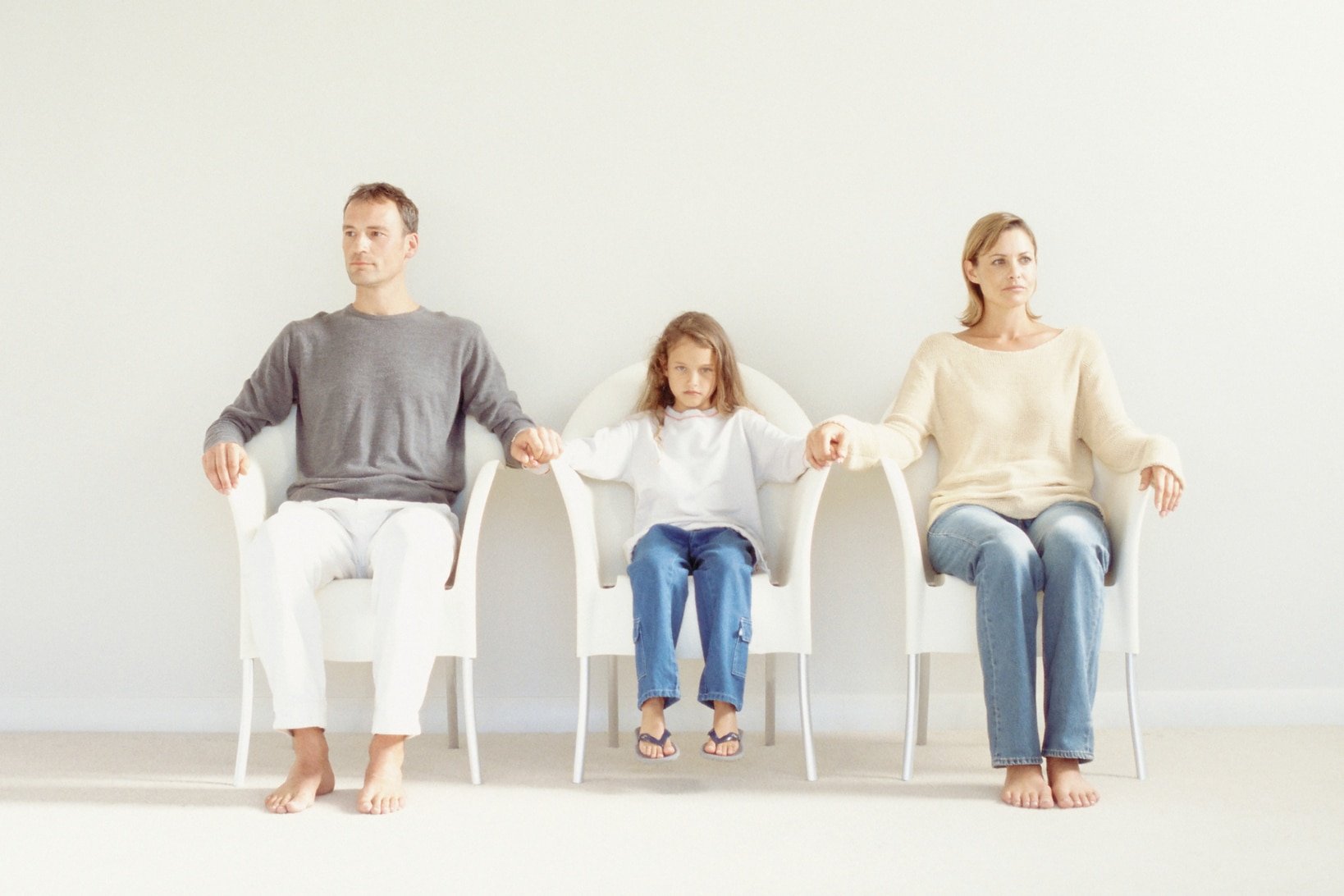Shared Custody vs Joint Custody: Pros and Cons Compared
When navigating the complexities of child custody arrangements, two terms that frequently arise are “shared custody” and “joint custody.”
While both concepts relate to how parents divide the responsibilities and rights concerning their children after separation or divorce, the nuances between the two can have significant legal and emotional implications for both parents and children.
Key Differences Between Shared custody vs joint custody
The key differences between shared and joint custody are that shared custody divides a child's physical time between parents, while joint custody focuses on shared decision-making authority for the child's upbringing, regardless of living arrangements.
Key Takeaways
Shared custody focuses on dividing a child's physical time between parents.
Joint custody involves shared decision-making authority for the child's upbringing.
Both arrangements can coexist in a custody agreement.
Courts prioritize the child's best interests when determining custody.
Effective communication and cooperation between parents is crucial for success.
Understanding Shared Custody vs. Joint Custody
This article aims to provide a clear understanding of shared custody vs. joint custody, their respective definitions, and how they differ in various contexts.
It will also explore the impact these custody arrangements can have on the child’s well-being, the legal implications for parents, and the factors courts consider when determining custody arrangements.
With 50% of marriages ending in divorce and an increasing number of custody cases, understanding the intricacies of these arrangements is crucial for families trying to navigate this emotionally charged process.
What is Shared Custody?
Shared custody, sometimes referred to as "split custody," involves both parents having significant, though not necessarily equal, responsibility for the child’s physical care.
The term is commonly associated with the physical division of the child’s time between both parents, meaning the child lives with both parents for significant portions of time, though not always on a perfectly equal basis.
In shared custody, one parent might have the child 60% of the time, while the other parent has the child 40% of the time.
Active Parental Involvement
The fundamental idea behind shared custody is that both parents remain actively involved in the child’s day-to-day life, ensuring that the child spends ample time with both parents.
This arrangement can take several forms, with alternating weeks or a more flexible schedule tailored to the needs of the child and the availability of the parents.
Flexibility in Scheduling for Shared Custody Arrangements
While shared custody provides both parents with the opportunity to participate meaningfully in the child’s life, the logistics of coordinating school schedules, extracurricular activities, and social life can be challenging.
Courts often emphasize the child’s best interest when considering shared custody arrangements, focusing on factors like the proximity of the parents’ homes and their ability to cooperate.
What is Joint Custody?
Joint custody, on the other hand, is primarily about the shared decision-making authority over the child’s upbringing rather than the physical division of time.
It ensures that both parents have an equal say in important decisions regarding the child’s welfare, education, health care, and other major aspects of their life.
Joint custody (or Joint physical custody) does not necessarily mean that the child will spend equal time with each parent; it is focused on the legal rights and responsibilities shared between both parents.
Joint Custody Requires Ongoing Parental Collaboration
In cases of joint custody, parents must work together to make decisions in the child’s best interests, which requires a level of cooperation and communication that may not always be easy after a divorce or separation.
For joint custody to be successful, parents need to put aside personal differences and focus on co-parenting effectively.
Courts Favor Joint Custody When Parents Demonstrate Collaboration
Courts are more likely to award joint custody when both parents demonstrate the ability to collaborate on decision-making and show a genuine commitment to the child’s well-being.
In contrast, when high levels of conflict exist between the parents, sole custody might be awarded to one parent to prevent potential disputes with the help of an experienced child custody lawyer who has dealt with cases related to family law.
If you haven’t hired a child custody lawyer before, know about these questions you should ask him/ her while hiring.
Key Differences Between Shared Custody and Joint Custody
Physical Custody vs. Legal Custody
Shared Custody primarily deals with the child’s physical time spent between the parents.
Joint Custody involves shared decision-making power but does not necessarily dictate how much time the child spends with each parent.
Time Division
In Shared Custody, the child typically spends substantial time living with each parent, though not always an equal split.
In Joint Custody, time spent with the child might be more weighted toward one parent, but both parents maintain equal legal authority over major decisions.
Decision-Making Authority
Shared Custody doesn’t necessarily imply shared decision-making. One parent could be the primary decision-maker while both share legal and physical custody.
Joint Custody ensures that both parents share equal decision-making authority regardless of the child’s physical residence.
Parental Communication
Shared Custody requires effective communication regarding the child’s day-to-day life but doesn’t necessarily extend to decisions regarding medical, educational, or religious matters.
Joint Custody requires a higher level of communication as both parents must consult and agree on major decisions.
Court Preferences
Some courts are more likely to favor joint custody when parents are capable of working together, while shared custody may be awarded to balance the child’s time with both parents without forcing them into constant collaboration on decision-making.
Pros and Cons of Shared Custody
Pros:
Increased Parental Involvement: Shared custody allows both parents to remain closely involved in the child’s day-to-day activities, from school pickups to extracurricular events.
Balanced Relationships: The child has the opportunity to develop strong, healthy relationships with both parents, which can positively impact their emotional well-being.
Greater Emotional Stability: Seeing both parents regularly can provide the child with a sense of security and stability, even in the midst of a family separation.
Cons:
Logistical Challenges: Balancing school, work, and social commitments can become complicated, especially when the parents live far apart or have conflicting schedules.
Disruptive Routine: Constantly moving between households may disrupt the child’s sense of consistency, especially if the two homes have different routines or expectations.
Potential Conflict: If parents do not have an amicable relationship, disagreements over day-to-day care can result in ongoing conflict that affects the child.
Pros and Cons of Joint Custody
Pros:
Shared Responsibility: Joint custody ensures both parents have equal rights and responsibilities when it comes to the child’s major life decisions, creating a balanced approach to parenting.
Collaborative Parenting: When parents are able to communicate effectively, joint custody promotes a united front in raising the child and making important decisions.
Emotional Benefits for the Child: Knowing that both parents are equally responsible for their upbringing can provide emotional reassurance to the child.
Cons:
Communication Difficulties: For joint custody to work, both parents must communicate effectively. In high-conflict relationships, this can be incredibly challenging and may result in ongoing disputes.
Potential for Power Struggles: Disagreements over major decisions such as schooling, healthcare, or religious upbringing can lead to power struggles that negatively impact the child.
Legal Complexity: Joint custody may require more legal oversight to resolve disputes over decision-making, leading to additional court appearances or mediation.
Factors Courts Consider When Deciding Custody
Courts typically base custody decisions on the best interests of the child, which involves considering a variety of factors:
Parental Cooperation: Courts often favor joint custody when both parents demonstrate a willingness to cooperate and communicate effectively.
Child’s Age and Needs: The child’s age, emotional development, and specific needs play a significant role in determining whether shared or joint custody is appropriate.
Geographic Proximity: In shared custody arrangements, courts consider the distance between the parent’s homes, as frequent transitions can be difficult for the child if the parents live far apart.
Parental Involvement: Courts will examine each parent’s level of involvement in the child’s life prior to the separation, as well as their capacity to continue providing care.
Child’s Preferences: In some cases, older children may express a preference for a particular custody arrangement, which the court may take into consideration.
Choosing the Right Custody Arrangement
The decision between shared custody vs. joint custody is not always straightforward and depends on various factors unique to each family’s situation.
Both arrangements can work well under the right circumstances, provided the focus remains on the child’s best interests.
Some parents may prefer the flexibility of shared custody, which allows for a more practical division of time, while others may benefit from the balance of authority that comes with a joint custody arrangement.
It’s essential for parents to assess their ability to collaborate, their geographical situation, and the child’s needs before determining which custody arrangement is most suitable.
Ultimately, the most successful custody arrangements are those in which the parents prioritize the well-being of the child above all else.
For those who have doubts regarding child support in joint custody, can read my post here and clear this doubt.
Frequently Asked Questions:
1. What is the main difference between shared custody and joint custody?
The primary difference between shared custody and joint custody lies in their focus.
Shared custody pertains to how the child’s physical time is divided between both parents, meaning the child spends significant time with each parent, though not necessarily on an equal basis.
Joint custody, on the other hand, refers to the shared decision-making authority over the child’s upbringing, including decisions about education, healthcare, and other major aspects of the child's life.
In joint custody, both parents maintain equal legal rights in making these decisions, even if the child spends more time living with one parent.
2. Can shared custody and joint custody exist together?
Yes, shared custody and joint custody can coexist. In fact, many families have both arrangements in place.
Shared custody ensures the child spends significant physical time with both parents, while joint custody gives both parents equal decision-making power regarding the child's welfare.
This allows parents to share responsibilities for both the child’s time and important life decisions, fostering a balanced approach to co-parenting.
3. What factors do courts consider when deciding between shared custody and joint custody?
Courts primarily focus on the best interests of the child when determining custody arrangements.
For shared custody, courts consider logistical factors such as the proximity of the parents' homes, their work schedules, and the child’s daily routines.
For joint custody, courts assess the parent’s ability to cooperate and communicate effectively on decision-making matters.
If high levels of conflict exist between the parents or if one parent is deemed unfit to make major decisions, the court may lean toward awarding sole physical custody to one parent to avoid disputes.
Conclusion
Understanding the differences between shared custody and joint custody is essential for navigating the family court system and making informed decisions in the best interests of your child.
While both forms of custody provide avenues for parental involvement, the specific dynamics of each arrangement can vary greatly.
Parents should consider not only their own needs and abilities but also the child’s emotional, physical, and educational requirements when selecting the appropriate custody model.
Effective co-parenting, clear communication, and a focus on the child’s well-being are key components in making either shared or joint custody arrangements successful.






